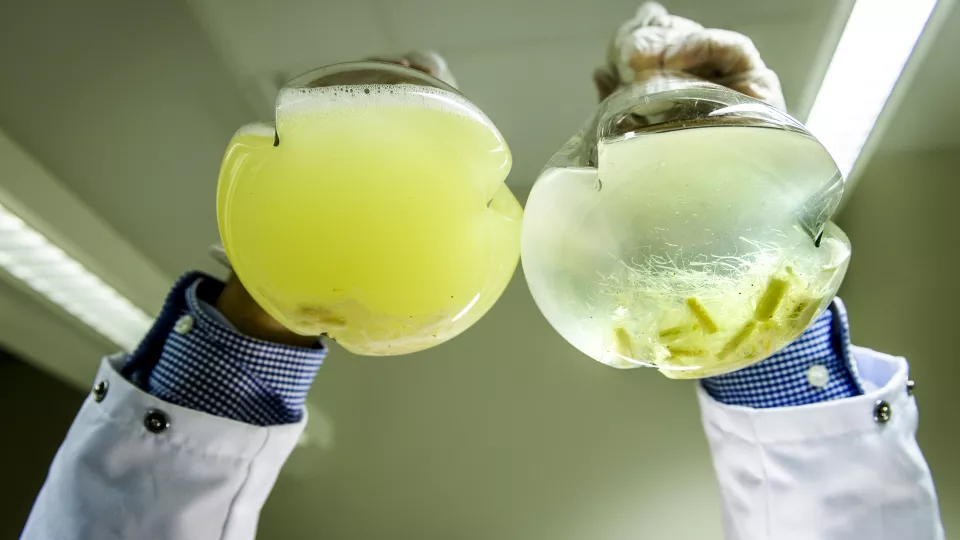The initiative has now received funding in order to transform feathers into animal feed, but eventually they may also end up on our plates.
“If we continue to gnaw away at the Earth’s resources and spit out waste at the rate we do today, we will need 1.6 planets to survive. But we only have one Earth. Therefore, we need to find new, smart and creative ways to reuse waste to a greater extent”, says Rajni Hatti-Kaul, professor of biotechnology at LTH, Lund University.
Hungry microorganisms can be part of the solution. Together with researcher Mohammad H. A. Ibrahim, she has identified and refined a strain of bacteria that can break down the often inaccessible proteins in the feathers into more convenient – and edible – amino acids.
“As an animal feed, they can replace fishmeal and soy protein, which today is imported from, mainly, South America, and results in a large carbon footprint”, says Mohammad H. A. Ibrahim.
The benefit of these microorganisms – which were isolated on a small hen farm in Egypt – is that no chemical additives are needed, which is good both for the environment and from a cost perspective. The conversion rate is high: 1 kilogram of feathers becomes 900 grams of protein. All of the protein in the feathers is used.
The microorganisms can handle practically all forms of slaughterhouse waste, including fish scales, but as a first step, the researchers are focusing on bringing bird feathers back into the food cycle. Today they are wasted in large quantities.
The researchers have validated the method in a lab environment where a so-called hydrolysis process takes place in which the feathers are “melted” down into a protein hydrolysate liquid of small chain peptides and amino acids.
What lies ahead is to develop the process to increase and expand productivity. The end product must also be evaluated. The method is expected to be fully developed by the end of 2018.
In order to transform the research into useful products, the researchers have formed a company, Bioextrax, based at Kemicentrum in Lund. The company has received funding from Nordic Innovation and the Sten K Johnsons Foundation, among others.
Contact:
Rajni Hatti-Kaul
+46 46 222 48 40
+46 70 874 85 40
rajni [dot] hatti-kaul [at] biotek [dot] lu [dot] se (rajni[dot]hatti-kaul[at]biotek[dot]lu[dot]se)
Mohammad H. A. Ibrahim
mhai [at] bioextrax [dot] com
+46 76 598 99 87
